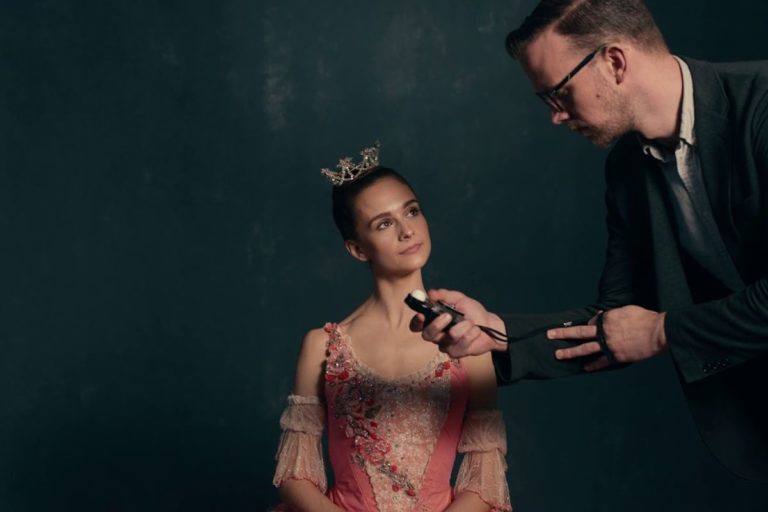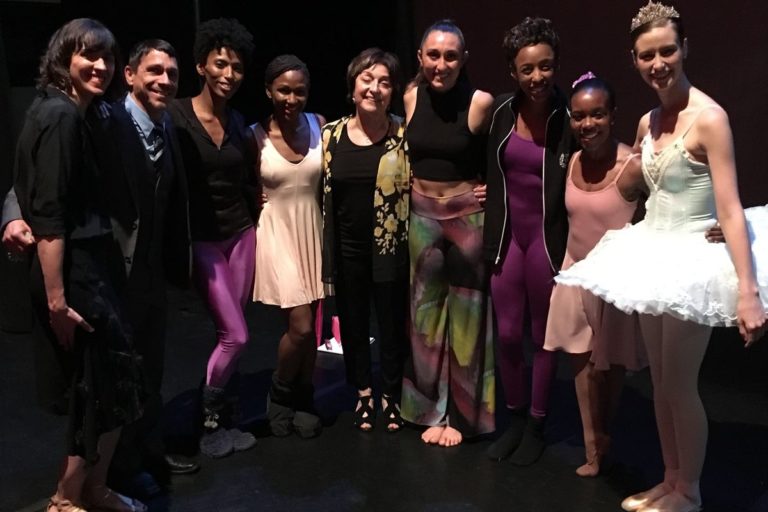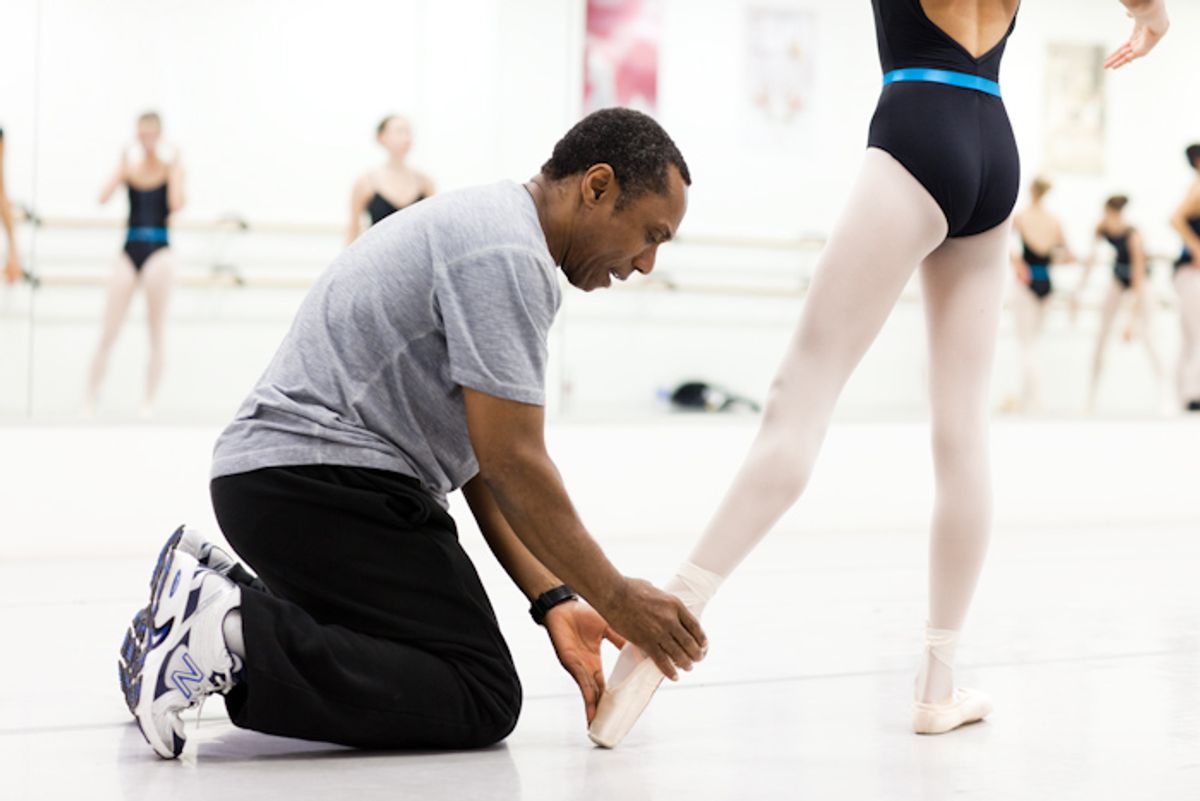
Dance Teacher asked nine respected instructors to identify the most common technique mistakes they see when addressing a group of students for the first time. Here, they discuss the origins of these problems and offer their best solutions.
…crunching their toes.
Watmora Casey
Artistic Director, Faubourg School of Ballet
Hanover Park, IL
Teaches ballet
I always start by looking at the feet. I’ll have any group of new students sit on the floor and articulate through the feet to see how they are pointing. The one thing I always see is crunching of the toes instead of extending through to the point. And then when they go up on relevé, a lot of them grip their toes into the floor.
I use a doming exercise to strengthen the feet. With the foot flat on the ground, you press all the toes into the floor and draw up the arch, like you’re gripping something, but the toes remain flat. It creates a dome underneath the instep and trains the muscles to elongate the toes as they point. We teach this exercise, plus floor barre, starting with very young students.
Today’s generation of young dancers is much faster, smarter and more aggressive than when I was growing up. These young dancers accept concepts earlier, but that doesn’t necessarily mean you have to expedite their learning. For instance, if a student is presented with material that’s too advanced—whether it’s a technically challenging step or a difficult character role—the student focuses on the task at hand and all the basics go out the window. If a student can’t use her feet properly, the rest is moot. I recently attended the ABT teacher training program, and what I liked about it was its emphasis on progression-building. Give students plenty of time to absorb a concept, then you can move on.
For the first three years after my school was established, we didn’t perform. It was just technique building, and of course it was difficult with the parents. But I will never do anything halfway. We have ballet six days a week, and modern, jazz and hip hop one day a week. We try to instill a love of good technique early on. Classical ballet is the foundation of all dance, and it must be done every day so young dancers can develop that discipline of the body. From there, you can branch out and do whatever you want to do.

Judy Rice. Photo by Evan Sung
…not standing forward on their feet.
Judy Rice
Associate Professor of Dance, University of Michigan
Ann Arbor, MI
Teaches ballet
It’s amazing that some kids can do incredible things onstage, and yet, when I get them into a ballet class, I see how badly they’re standing and how unaware they are of their habits. They don’t want to stand forward on their feet. They open into first position, go back onto their heels and often pronate. I think it’s a natural inclination (especially when trying to force their turnout), but it makes it impossible for them to transfer their weight and to stand without gripping the barre. Plus they wind up sticking out their rib cage to counterbalance with their upper body. Where a less-experienced teacher might try to fix the rib cage, I go right down to the feet and work from the ground up.
I talk to dancers about the foot being a triangle: Your big toe joint and your baby toe joint are two points of the triangle, and the heel is the third point. There is some weight on your heel, but you need to distribute more weight between the two points at the ball of the foot. And I’ll assign homework. I’ll tell them to make sure they’re forward on their feet when they’re brushing their teeth, washing their hair and waiting for the bus. There’s a line I use with my kids at Michigan: “If you don’t make it a part of your life, it will never be a part of your technique.”
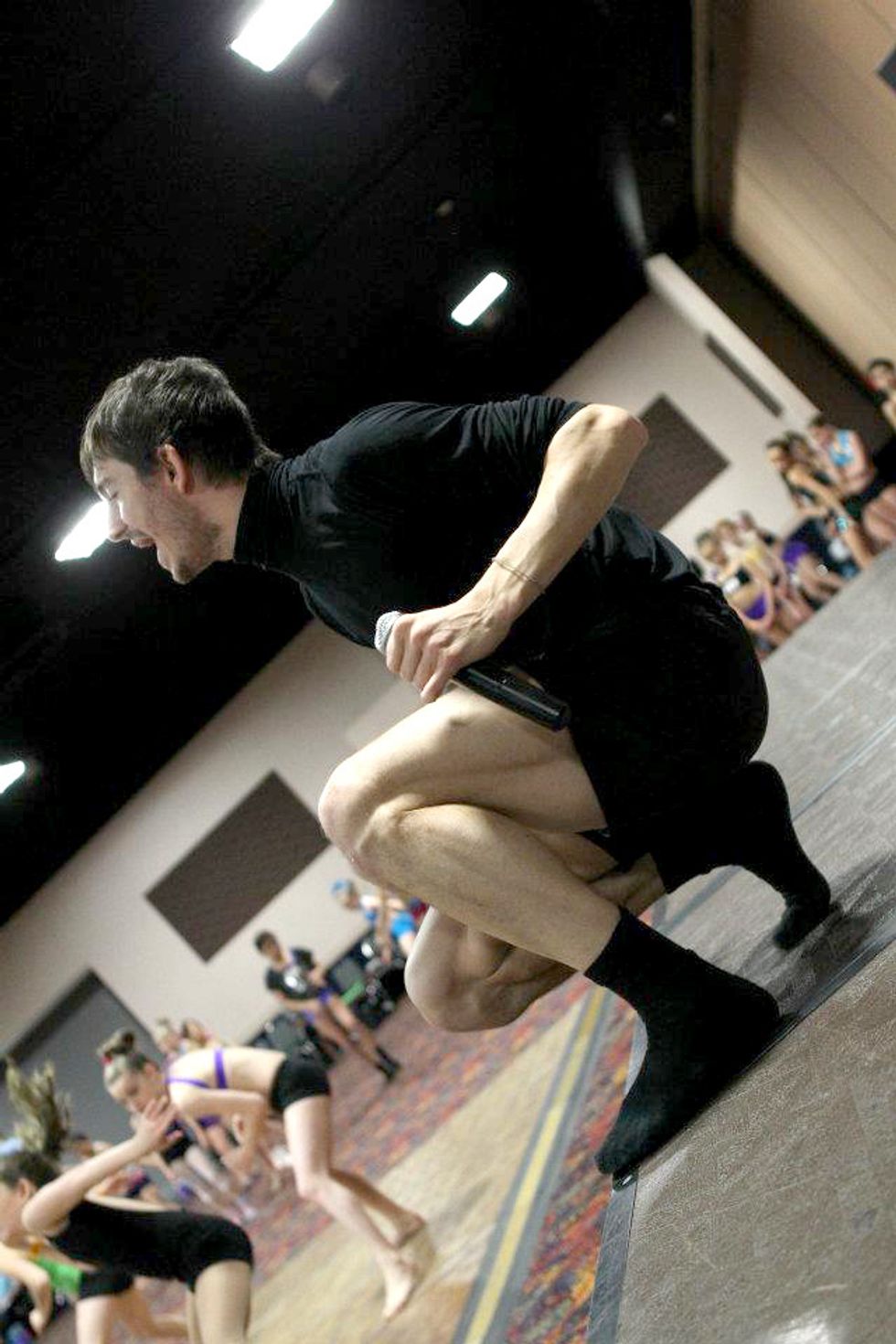
Photo by Leslee Crosland, courtesy of Andy Pellick
…overlooking transitions.
Andy Pellick
Faculty, New York City Dance Alliance
New York, NY
Teaches jazz and contemporary
The biggest problem I see is students practicing tricks. To get the attention of judges, they focus on being flashy because it’s really easy to look at the big, exciting moves. Because of this, transitions are being completely overlooked.
Kids struggle with pas de bourrée, and they don’t work through their feet and plié. Clean footwork goes far, especially since the judging table is at eye-level with the dancers’ feet.
Dancers focusing on tricks create landmarks in a dance. “Oh, I have this turn sequence coming up in 30 seconds.” But the in-between moments are what makes it a dance.
I try to remind the dancers that if they become professionals, they’ll rarely have to pull out the most advanced moves. Transitions separate dance from being a sport and an art. With advanced dancers, I create combinations that travel and eat up space, so they’re focused on really hauling and moving. For younger kids, I give them a story, so they focus on the feeling and are present in their timing. It’s not focusing on A and B, but how to get from one to the other.
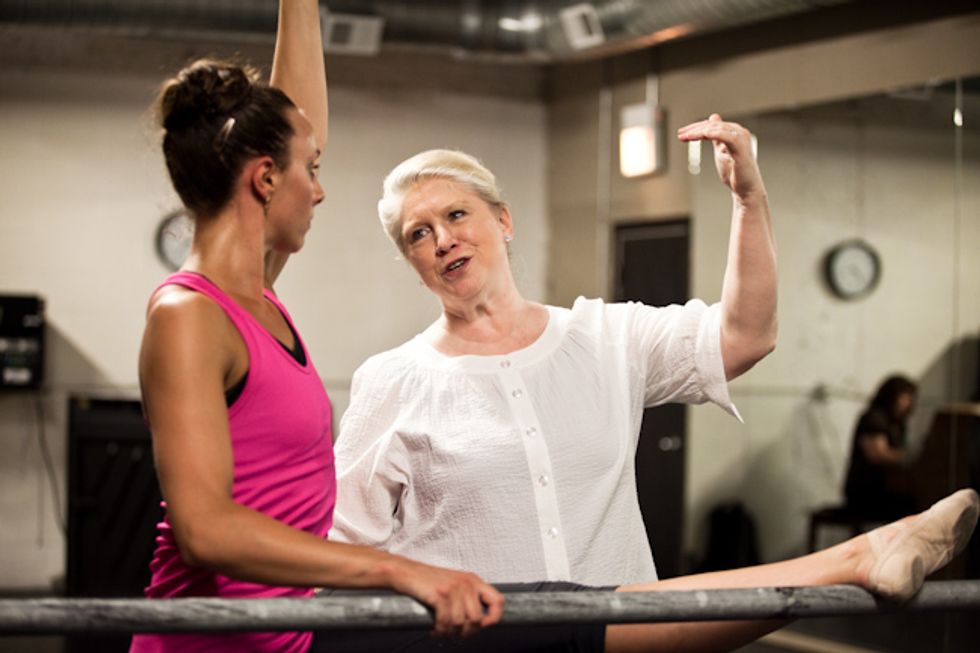
Photo by Claudia Goetzelmann
…wobbly on their legs
Peff Modelski
Visceral Dance Center
Chicago, IL
Teaches classical ballet and Feldenkrais
I have many students who are wobbly on their legs, regardless of the discipline they specialize in. They don’t know how to stand properly or transfer weight efficiently and are constantly readjusting and losing their balance.
This stems from a lack in their early training: Some schools teach steps and sequences too quickly—often because kids need to learn them for recitals. So the students aren’t becoming strong in the basics first, such as learning how to transition between movements and feel the floor under their feet.
To help children learn about weight, I suggest you have them practice shifting their weight very slowly without moving their feet. Let them feel what it’s like to shift their weight so far that the other leg feels light enough to lift off the floor. Remember to speak slowly so that their nervous systems calm down and they can concentrate on feeling their weight transfer through their feet.
Another exercise is to have students watch a dog or cat walking. Notice their paws spreading a bit when they step forward and transfer their weight. Tell your students to imagine their toes spreading when they use their feet—whether they’re in shoes or barefoot. You can also have them wiggle their toes while they’re standing, or ask them to try taking just one toe off the floor at a time. There are many games like this that will help them strengthen their feet and improve stability.

Photo by Sabi Varga, courtesy of Boston Ballet School
…poorly aligned.
Tamar King
Newton Studio Principal, Boston Ballet School
Boston, MA
Teaches ballet
I think that students are exposed to too much material too early because teachers feel they have to entertain. As a result, I see a lot of students who have poor alignment—pronating from the hip to the knee to the ankle. Ballet isn’t natural to the physical structure and students need time to develop the strength and muscle groups that will help them work properly and safely.
Setting up the body correctly is a major priority for me, especially when students are growing. I’m very consistent with their barre and center work and use repetition a lot because coordination and strength are major factors at this level. I always start working in simple positions. Plié and tendu are the most important foundations to perfect.
Since it takes a lot of focus for a child to stand up straight and hold her rotation and core, I balance my class with movement, so they’re also really moving and addressing their love of dance.
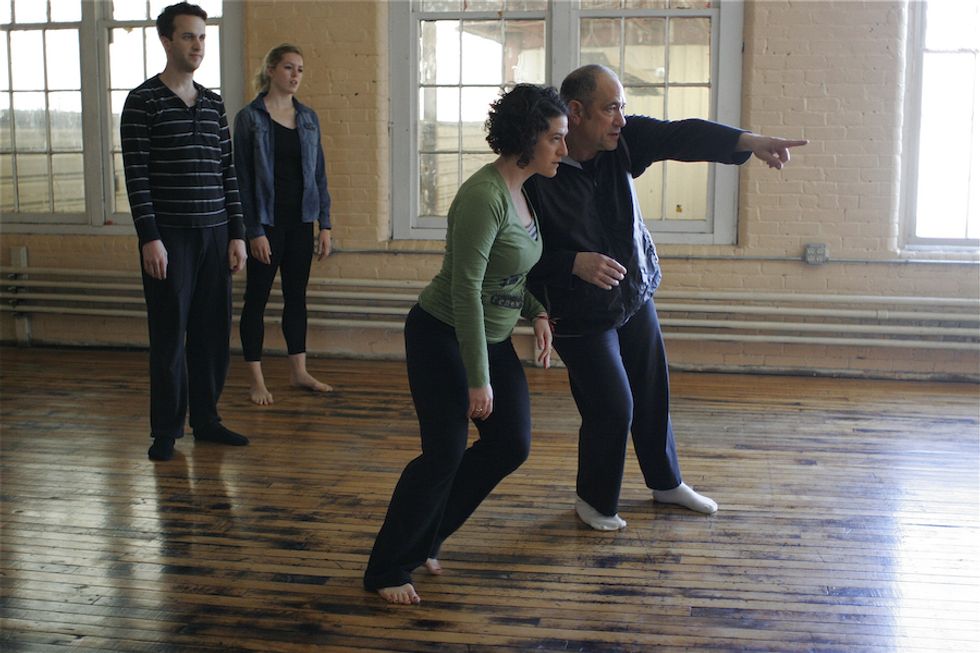
Photo by Veronika Hellmer, courtesy of David Dorfman Dance
…looking down.
David Dorfman
Dance Department Chair, Connecticut College
New London, CT
Teaches modern dance and composition
I have a reaction when my students are looking down. It not only cuts off their vision, it also alters their presence and often changes their sense of alignment and balance.
It usually happens on the first move of a combination, and right before leaping. Dancers tend to be shy about their bodies, especially when learning in a social situation. And as they become more internally focused, their eyes drop.
In terms of looking down before jumping, my theory is that it’s a reflex tied to an unrealistic fear. It makes sense that if you were flying, you’d want to look at where you’re going to land, or where you came from. But let’s be honest, we’re not leaping that high. It’s not necessary to look down each time we leap.
To combat this, I take the constant, gentle prodding approach, with humor. I’ll say, “OK. Let’s look at the ground for a good 10 seconds. That is a black, marley surface, utterly uninteresting. Had enough? Let’s look up.” I’m not one to single people out or use punishment through humiliation, but in a loving way I’ll ask one student to leap, with the others watching. And then I’ll ask her to leap again, while looking at me. Everyone in class sees that transformation.
When you’re teaching kids—especially when they’re young—remind them to see everything in the room. Tell them to see the other students, to see their teachers, to see the pool they want to go to afterwards, or to see the sweat that’s coming off of them. And they can really see it. At that age they don’t shut off the rest of the world just to tendu.
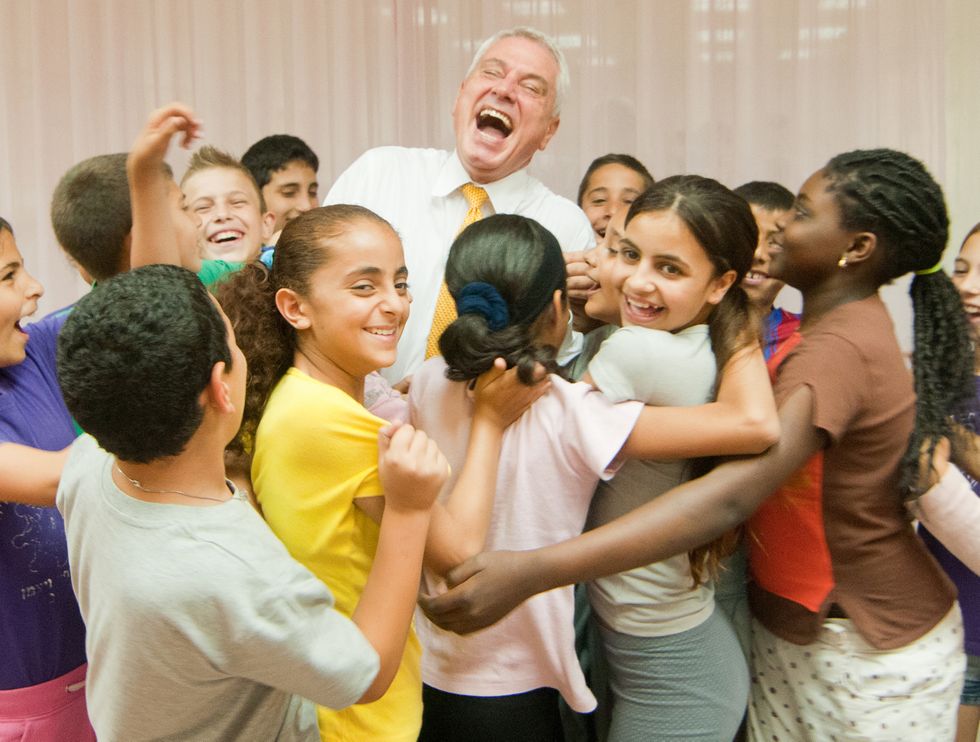
Photo courtesy of Pierre Dulaine
New York, NY
Teaches contemporary social dances in a classroom setting
Kids have always been shy about touching each other, but today, there’s no social aspect in life. Many have cell phones, computers and Facebook. They no longer talk to one another, or communicate face-to-face. So even if children were a little shy in the past, they’re very shy today. But at 10—this is why we work with fifth-graders—they’re still malleable. They’re still impressionable.
The right wording can make children feel comfortable enough to dance in partners. I’ll say, “You’re not boyfriends, you’re not girlfriends, you’re just dance teams.” At 10 years old it can never be about the romance between partners.
Teachers have to be relaxed and funny. I don’t mean that they act like fools, but they have to be jovial with the students in a fun and respectful way. We always call them ladies and gentlemen, not boys and girls. We don’t shout at them; we give them a safe space. We use different tones of the voice and teach in images that connect with the kids and capture their attention. You have to be a performer.
…inhibited.
Kimi Okada
Director, ODC School
San Francisco, CA
Teaches composition and choreography
Teaching youth is about getting through that barrier of what’s foreign. Younger kids are more willing to jump in and try something new because they don’t have those inhibitions yet. Once they get to a certain age, doubts come in. A great thing about teaching composition to young people is that they have a sense of pride in what they created. But you have to open up their minds to what dance can be. They don’t know where to begin and will make up what is familiar. The challenge is trying to find the right prompts to trigger a kid’s imagination.
Dispel the inclination to be mimetic. Pretending we’re flowers and blooming isn’t a very interesting problem to solve. Give them bite-sized problems to fill, and they’ll realize the source material is endless and infinite. Take a routine that you do every day, like brushing your teeth and putting on your socks, and abstract that. Abstract it again. And again. Then teach it to somebody else. Then make a composite phrase.
Suddenly you have a short piece. Dance something based on a recipe. Make up a movement for different letters of the alphabet that’s loosely inspired by the shape of the letter and spell your name. Make it up for numbers and dance your phone number. Instead of having them improvise wildly, have them think about exactly how they’ll compose something in pieces. Then the challenge is remembering it and teaching someone else.
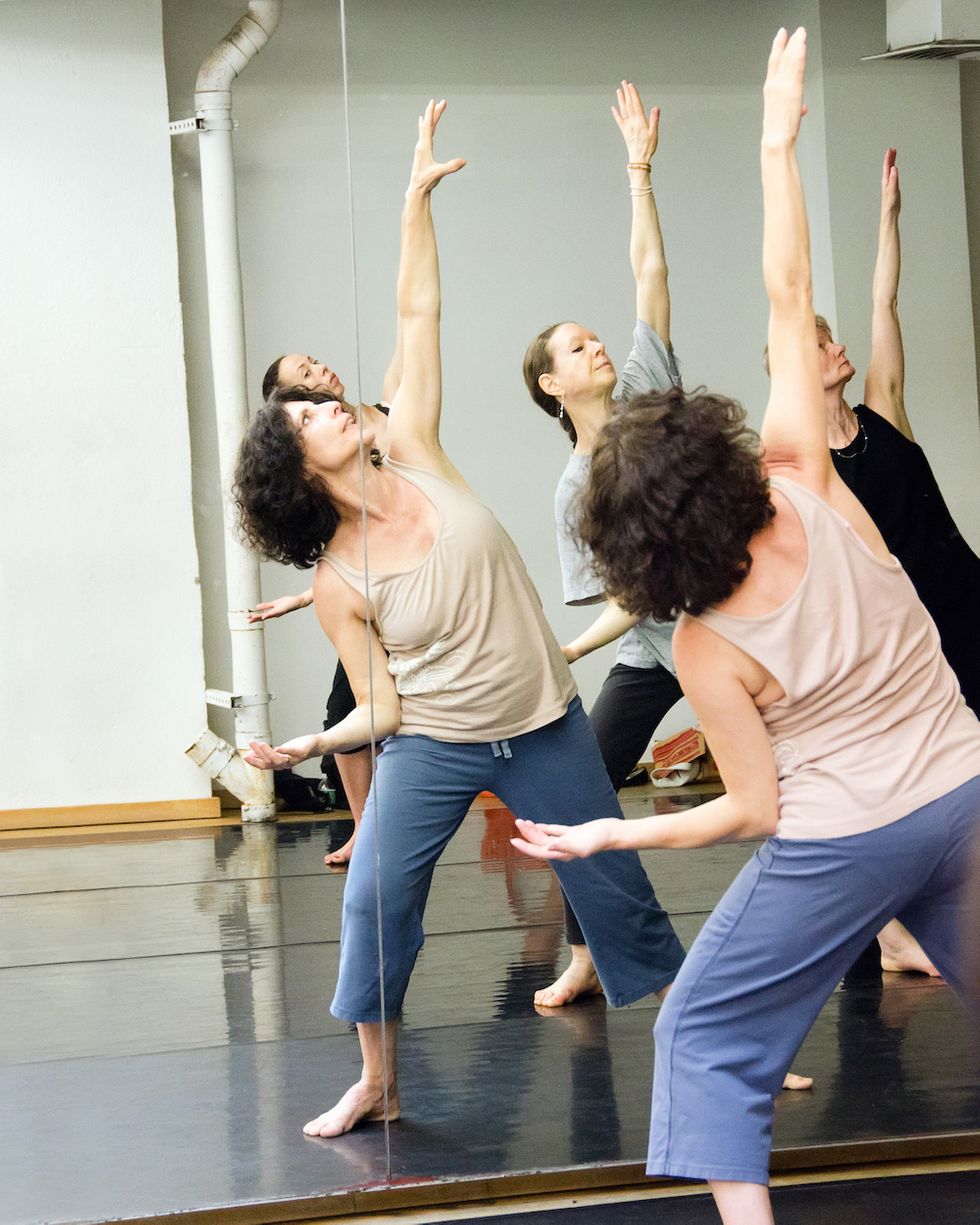
Photo by Kyle Froman
…over-rotated.
Laurie De Vito
Co-founding Director, Dance New Amsterdam
New York, NY
Teaches contemporary Simonson technique
It’s too much turnout that they’re not capable of, and that causes a myriad of other problems. You find your turnout by rotating the leg in the hip socket, but many start by turning their feet out, so the rotation is happening all the way down there. The knee can’t match that and the hip can’t match that, but if the kid’s holding on to a ballet barre, they manage to stay upright. It’s not until they come to the center that they realize they can’t stand that way.
Sometimes I’ll get a student who is very advanced, but overworking her rotation. So I have to be very gentle, because that’s a way of life for her. I’ll say, “In my class, let’s just be open to this idea. If you want to do that in your ballet class, that’s fine.” Then, I’ll grab her after class, and have her stand in front of the mirror with feet together in parallel and then instruct her to turn out from the hips. Ask her to tendu where that foot is pointing, in that line. That is her true rotation.
Next, I’ll ask her to stand in the over-rotated position where she normally goes to and turn sideways to see in the mirror how she’s hyperextending her lower back—which forces her to tuck the pelvis under, which sometimes extends the rib cage and sometimes collapses the sternum. Proper turnout is the starting base. Then you fix everything from there up.
